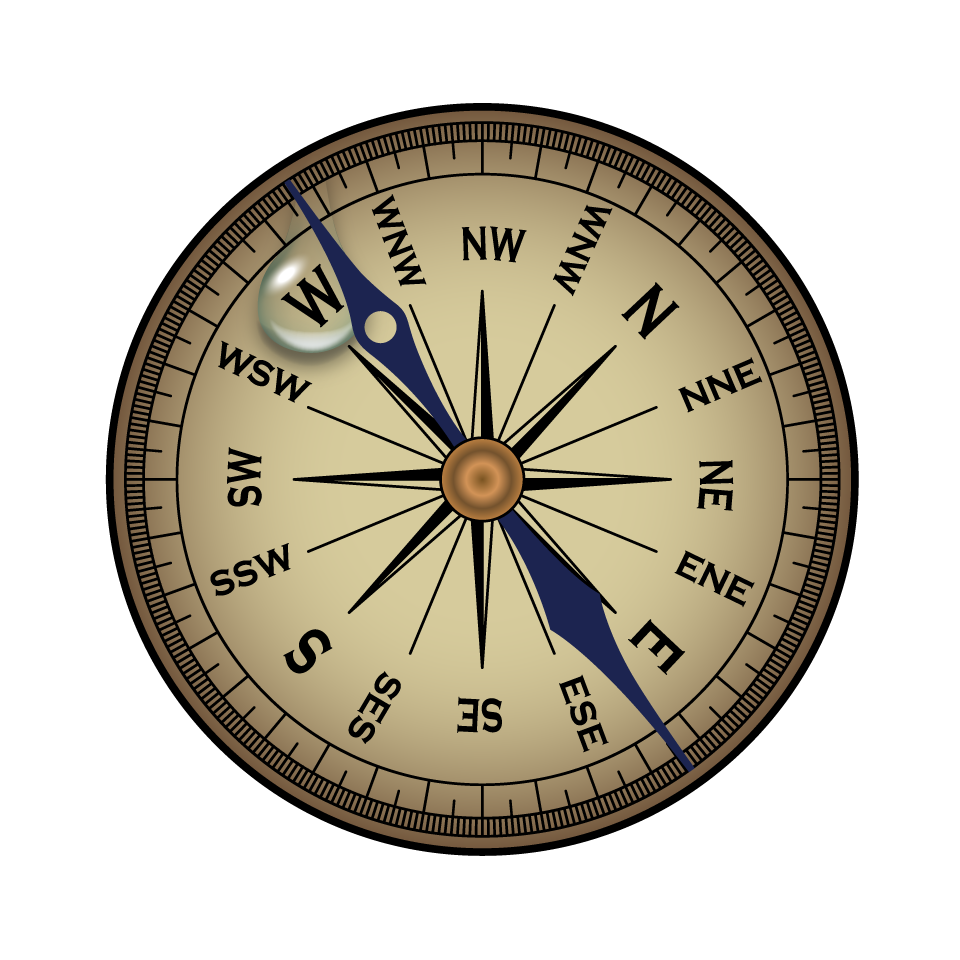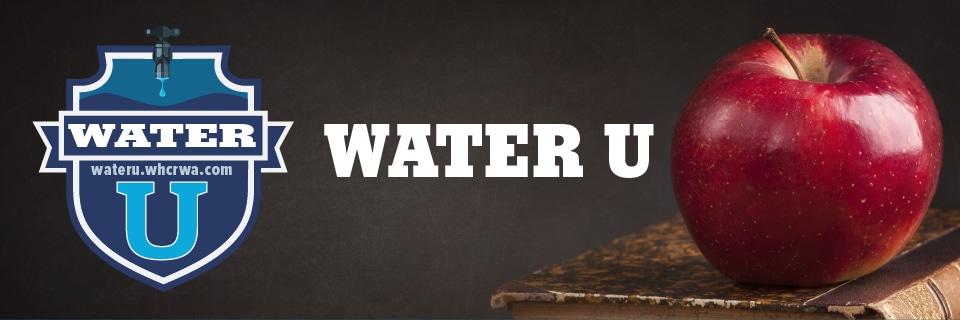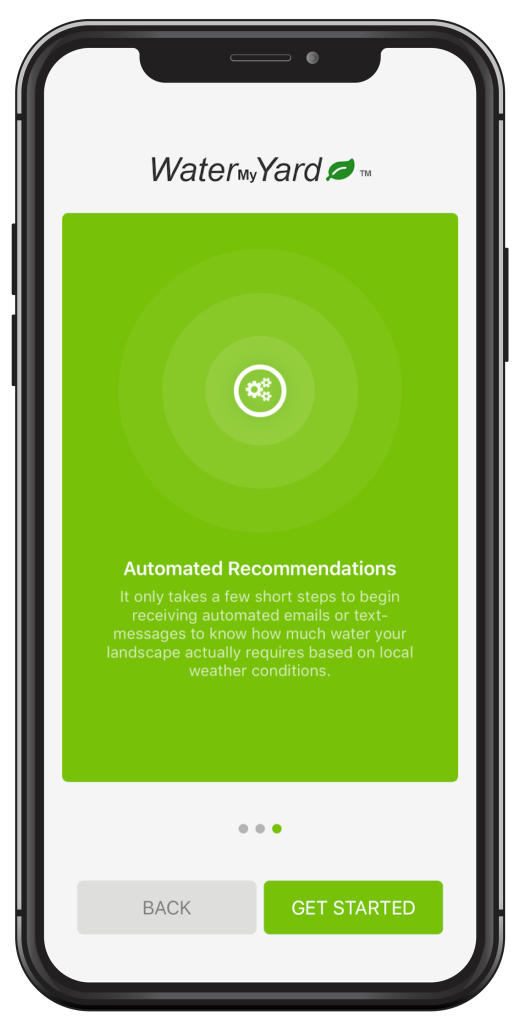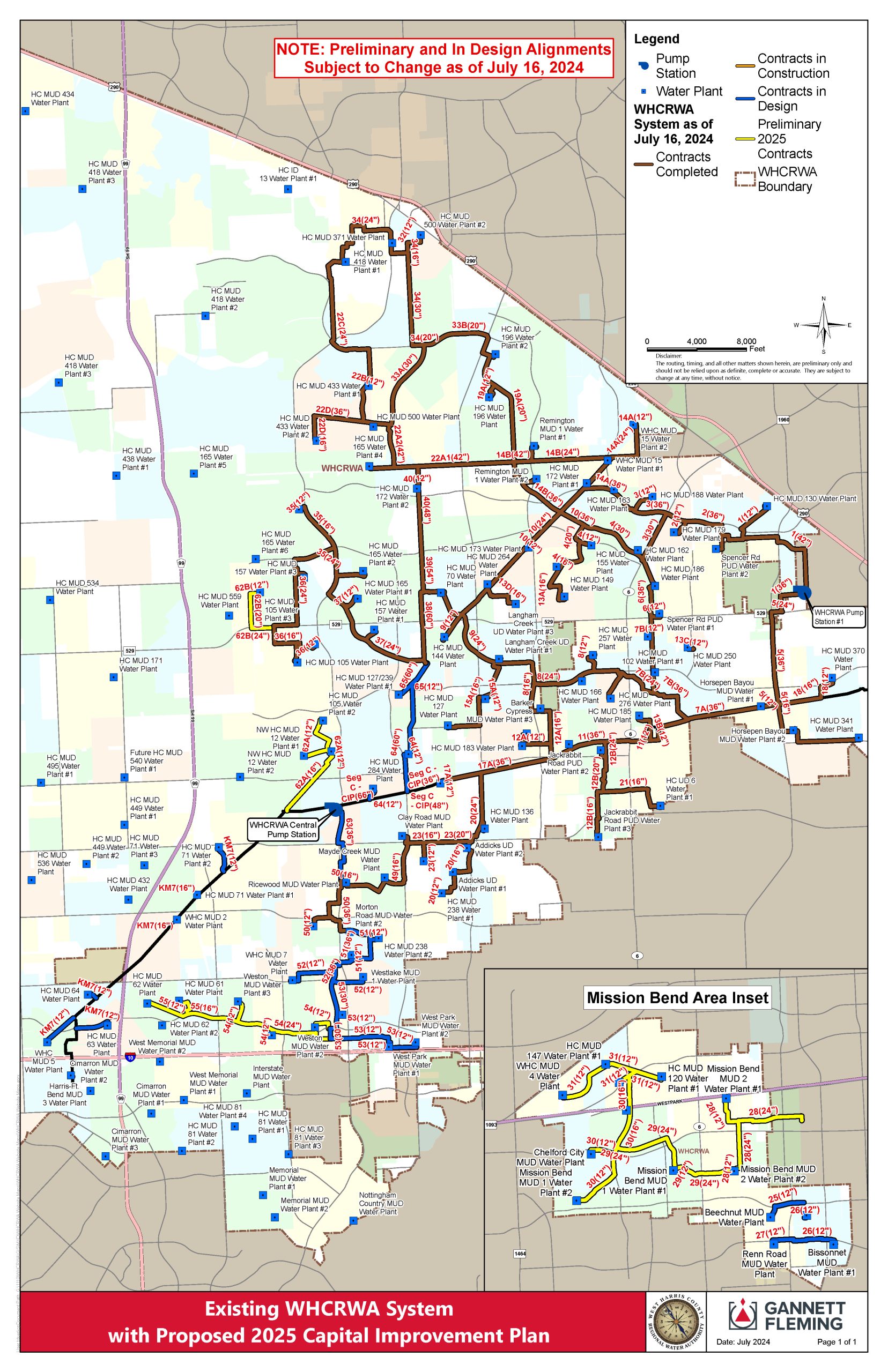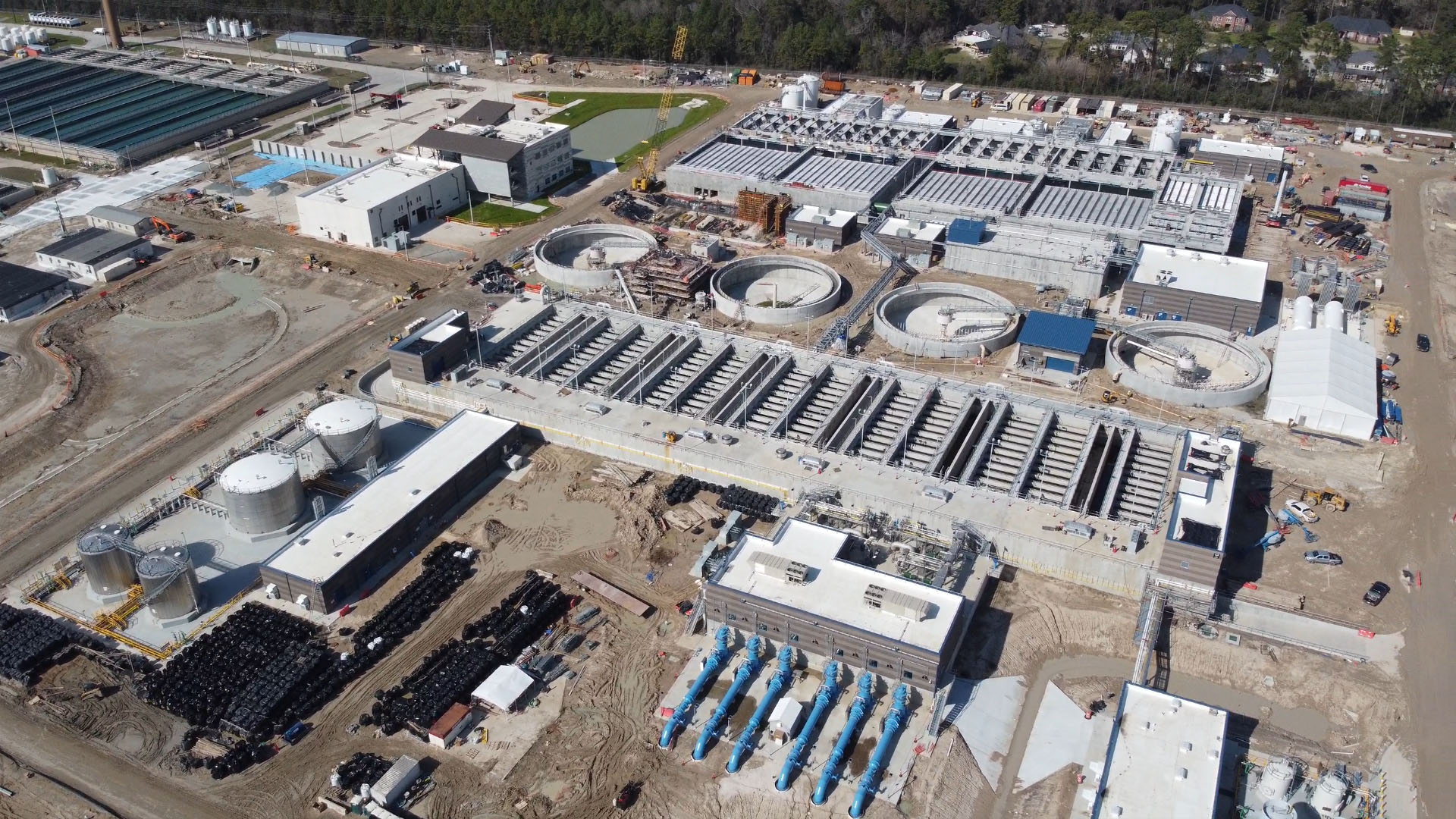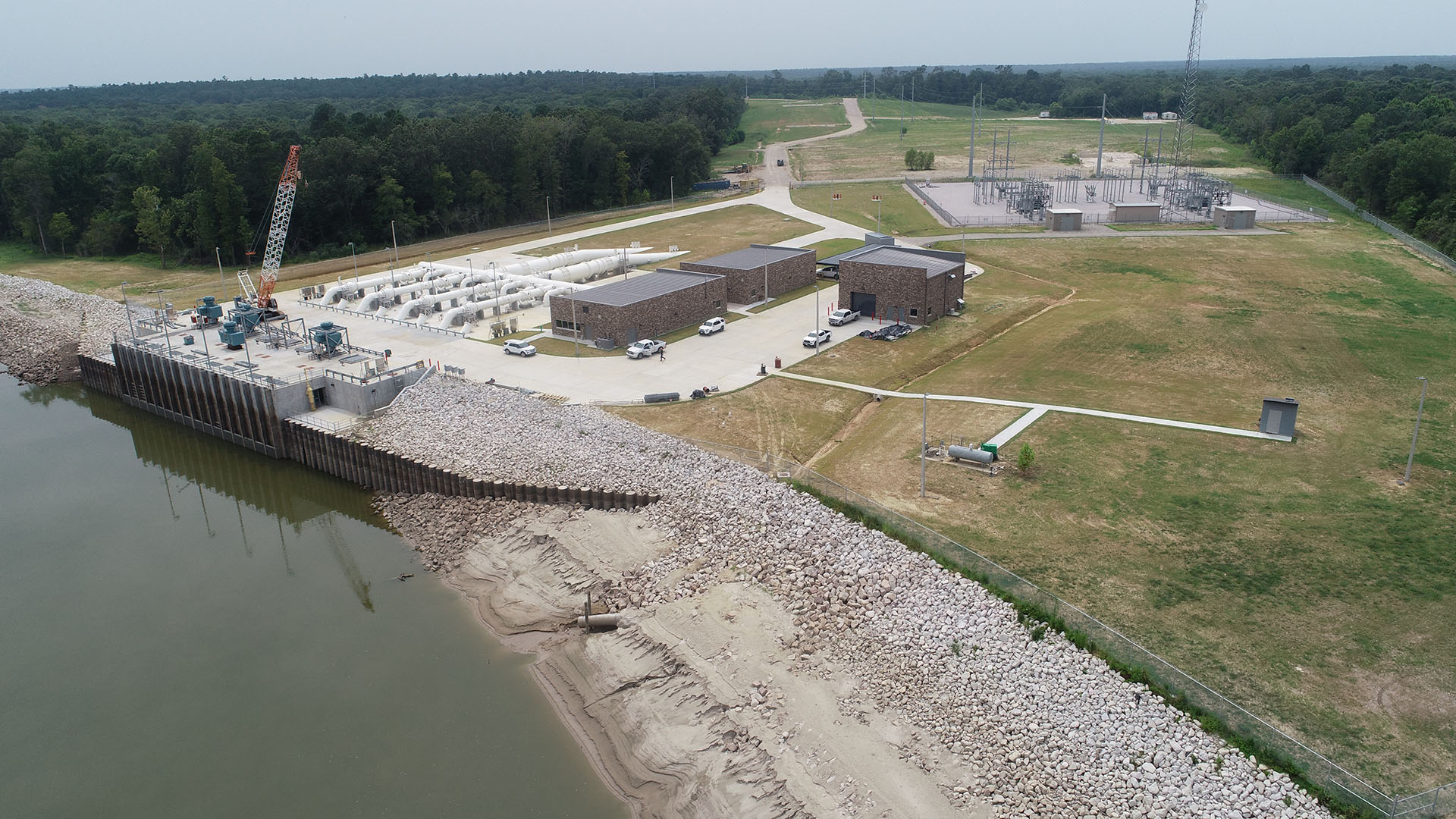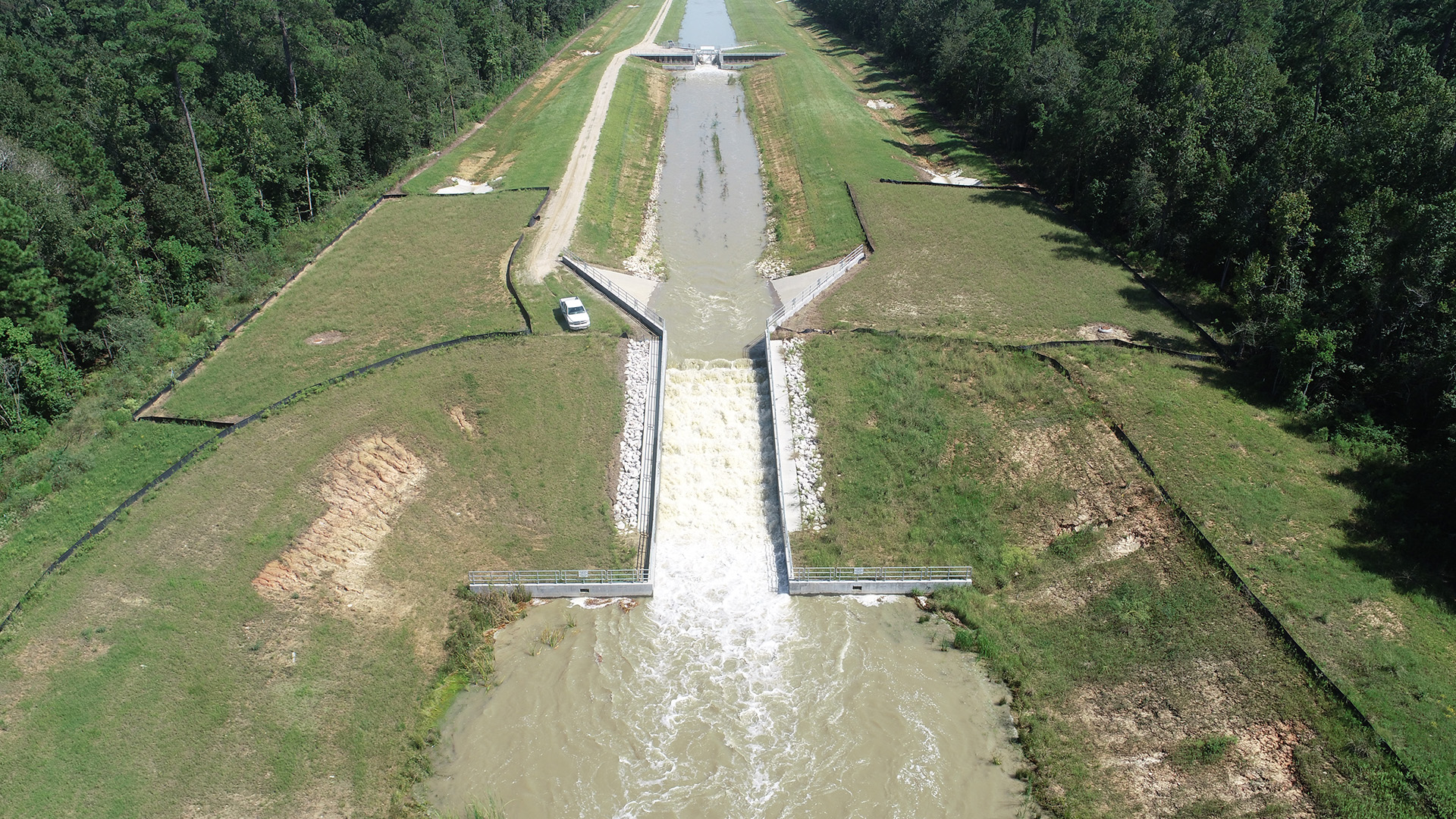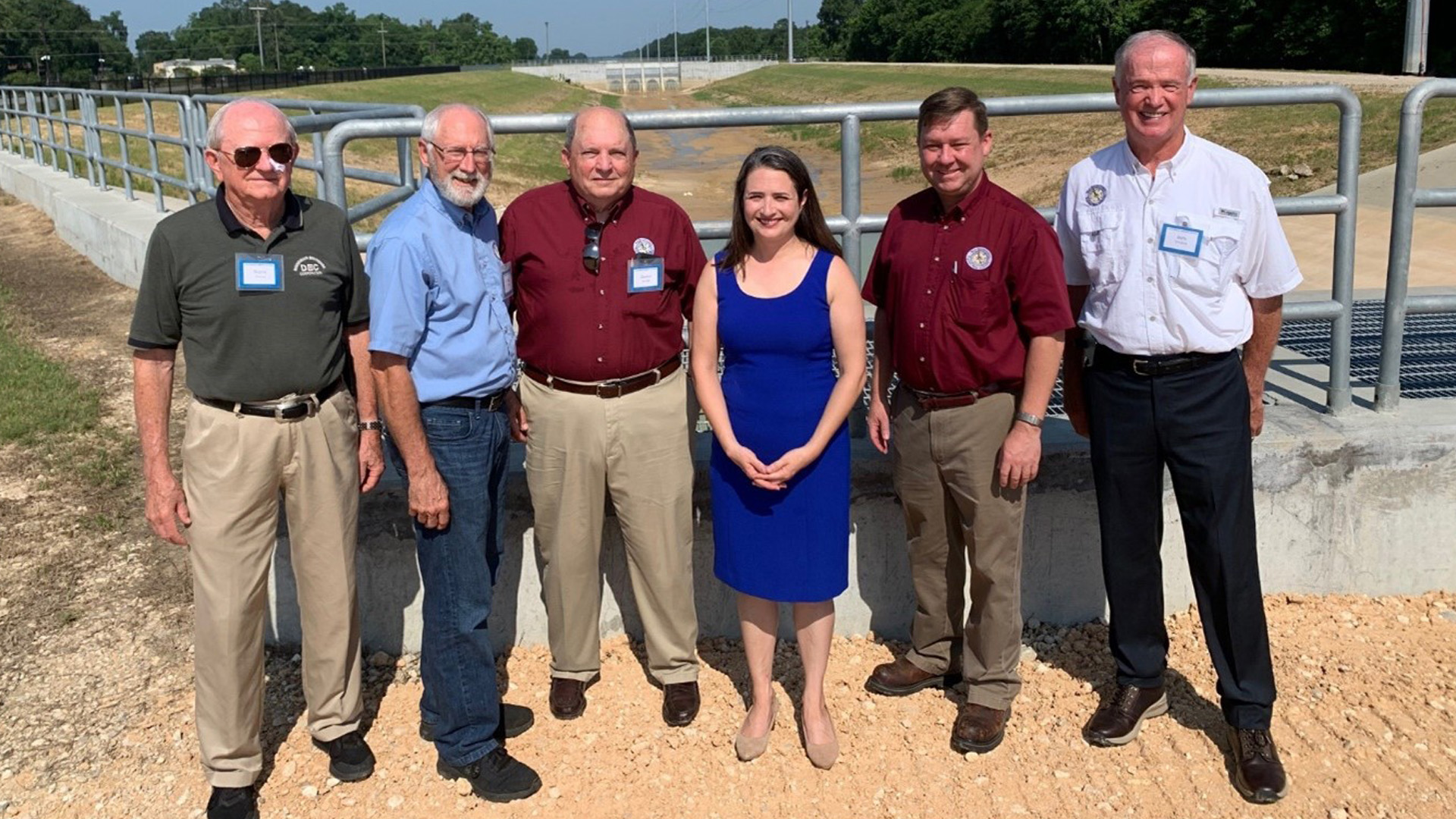Created by the Texas Legislature in 2001 to comply with groundwater reduction as mandated by the Harris Galveston Subsidence District (HGSD), the WHCRWA is committed to securing a long-term supply of quality drinking water as well as promoting water conservation.
The HGSD Conversion Requirements include.
- Reducing groundwater pumpage 30 percent by 2010 (accomplished)
- Reducing groundwater pumpage 60 percent by 2025
- Reducing groundwater pumpage 80 percent by 2035
It was therefore necessary to find and secure an alternative supply of water instead of getting all our water from groundwater wells.
The WHCRWA has four major components of water supply/infrastructure projects which include the Surface Water Supply Project, WHCRWA internal distribution lines connecting to local MUDs, the Northeast Water Purification Plant Expansion Project, and the completed Luce Bayou Interbasin Project.
Surface Water Supply Project
To meet the Harris-Galveston Subsidence District and Fort Bend Subsidence District’s groundwater reduction requirements for 2025 and beyond, the West Harris County Regional Water Authority has partnered with the North Fort Bend Water Authority to construct the Surface Water Supply Project.
The Surface Water Supply Project is needed to conserve groundwater and reduce land subsidence. Pumping large amounts of groundwater causes the ground to settle, lowering the elevation of the land. This project will help to reduce land subsidence and will meet the water needs of a rapidly growing population.
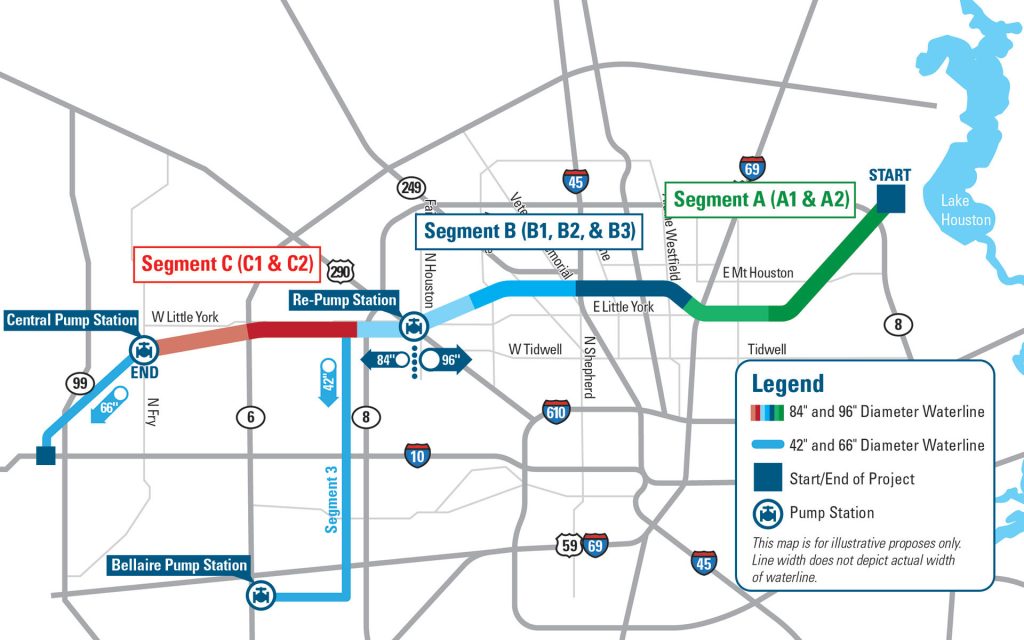
Once complete, surface water from Lake Houston will be supplied to retail water providers by way of the City of Houston’s Northeast Water Purification Plant through over 55 miles of pipeline and two large pump stations. These transmission pipelines will vary in diameter from 42 inches to 96 inches, depending on the pipeline segment.
Visit the Surface Water Supply Project website for more information
WHCRWA System
The WHCRWA has an aggressive Capital Improvement Plan in place to meet the timelines that have been established for design and construction of the WHCRWA’s facilities.
As of June 2024, the WHCRWA has:
- Designed, purchased easements for, and constructed over 81.9 miles of new waterlines in WHCRWA’s boundaries.
- Constructed WHCRWA Pump Station #1 with 60MGD pumping capacity.
- Two additional Pump Stations are under construction with a capacity of 330MGD.
- Deliver approximately 28 million gallons per day of surface water to 69 water plants.
The map to the right shows the existing WHCRWA System; contracts completed, contracts in construction, in design, and the preliminary 2025 construction contracts.
The map below shows the existing WHCRWA System; contracts completed, contracts in construction, in design, and the preliminary 2025 construction contracts.
Northeast Water Purification Plant Expansion Project
The estimated $1.973 billion-dollar Northeast Water Purification Plant (NEWPP) Expansion Project is managed by the City of Houston (COH) and will serve the COH, WHCRWA, NHCRWA, NFBWA, and CHCRWA with each paying their fair share of the cost.
The progressive design build project will add 320 million gallons of treatment capacity to the NEWPP’s existing 80 million gallon per day water treatment plant.
WHCRWA will have a 25.76 percent cost share and 82.42 million gallons per day of treated water.
The photo above shows Phase 1 of the NEWPP Expansion Project construction progress as of March 2023.
Luce Bayou Interbasin Transfer Project
The Luce Bayou Interbasin Transfer Project (LBITP) is the largest raw water supply project built in Southeast Texas in the past 50 years. The LBITP transfers surface water to Lake Houston from the Trinity River located in Liberty County, Texas. It is comprised of the 500 MGD Capers Ridge Pump Station, 3 miles of Dual 96-inch Diameter Pipelines, and 23.5 Miles of Earthen Canal. A U.S Army Corp of Engineers Permit (SWG-2009-00188) was approved for the project in 2014 and construction was completed in 2020. The LBITP is currently in operation and supplying water to Lake Houston.
WHCRWA’s share of this project is approximately 70 million dollars and will increase our water demand allocation to 82 million gallons per day and a total water demand allocation of 110 million gallons of water per day.
How does the WHCRWA pay for these projects?
The Authority does not charge a property tax, and therefore we must charge sufficient rates to cover the debt service payments for bonds sold to pay for projects, as well as our operating costs. We rely on the services of an independent rate analyst to calculate the Authority’s water rates needed to pay our share of all the conversion projects.
The WHCRWA Board of Directors is committed to keeping the cost of water as low as possible and to keeping any rate increases reasonable and consistent with this commitment.
Pumpage and Surface Water Rates effective 1/1/2024
Groundwater – $3.95/1,000 gallons and
Surface Water – $4.35/1,000 gallons
